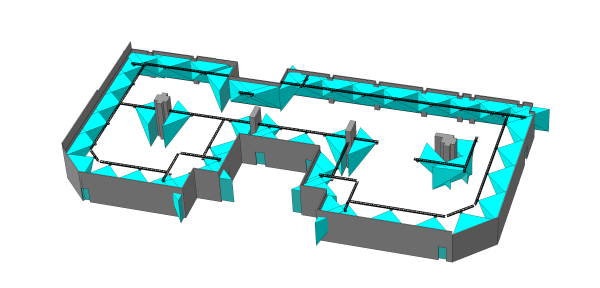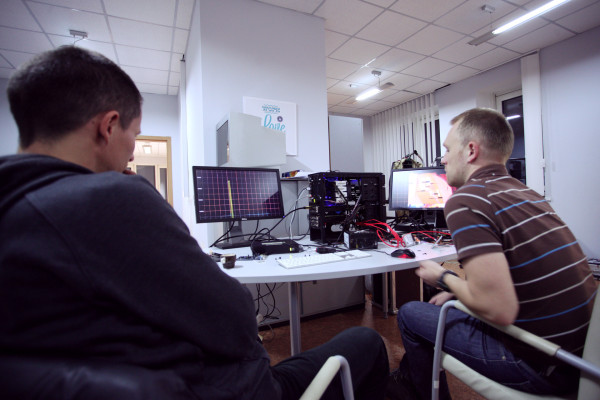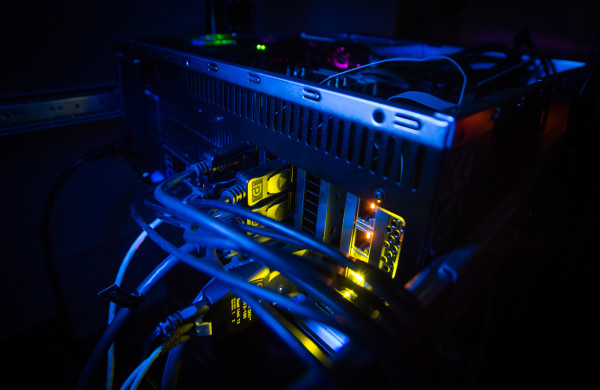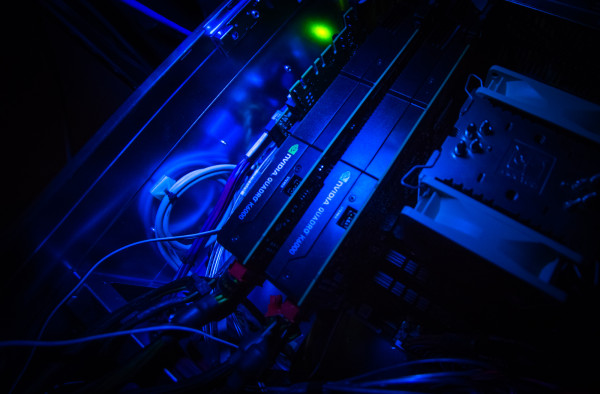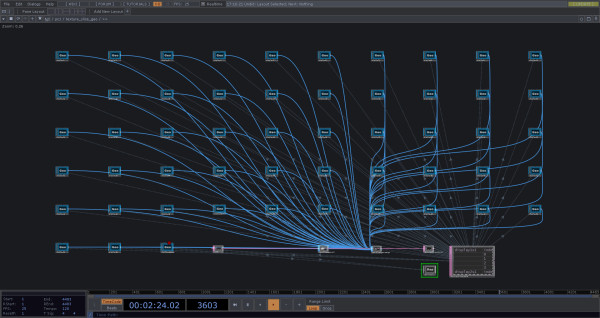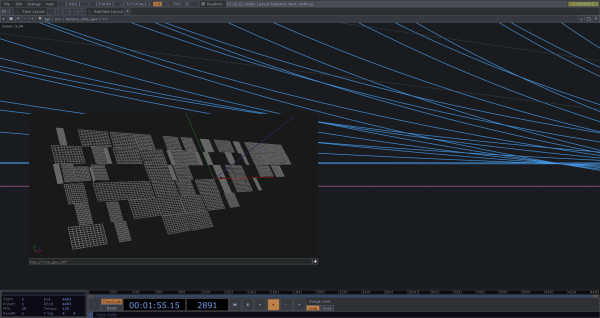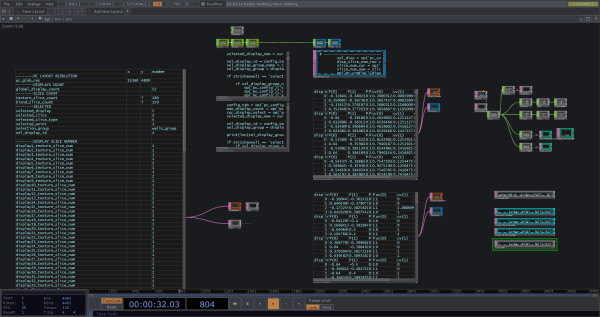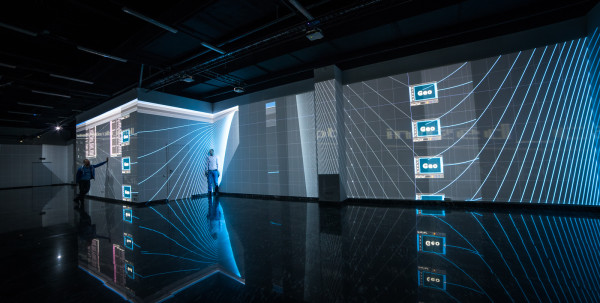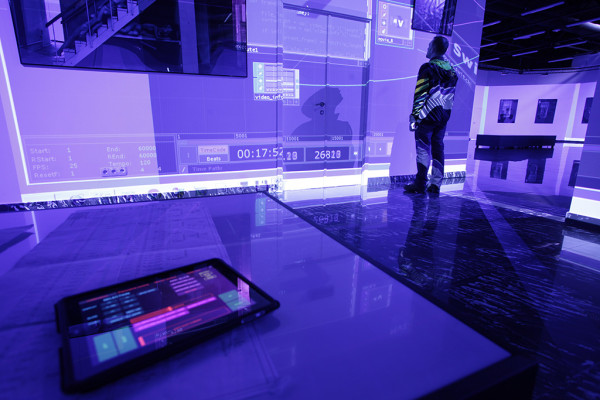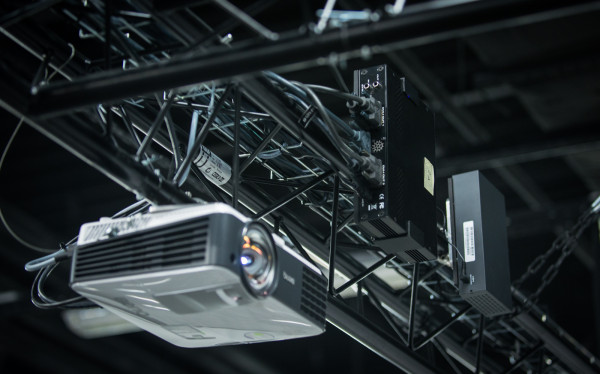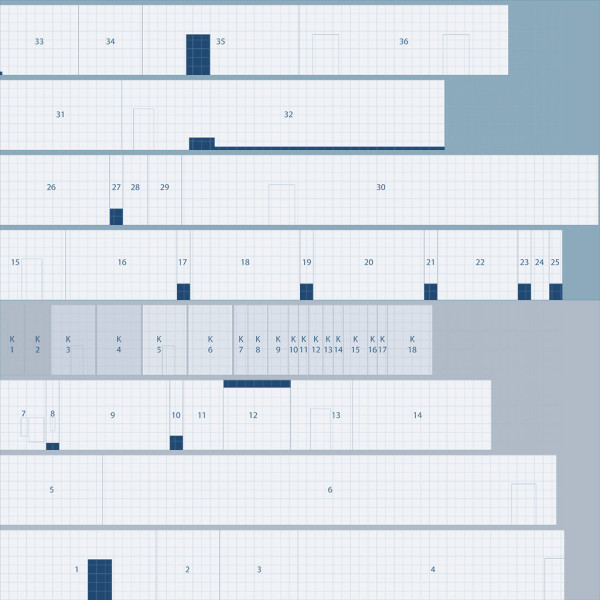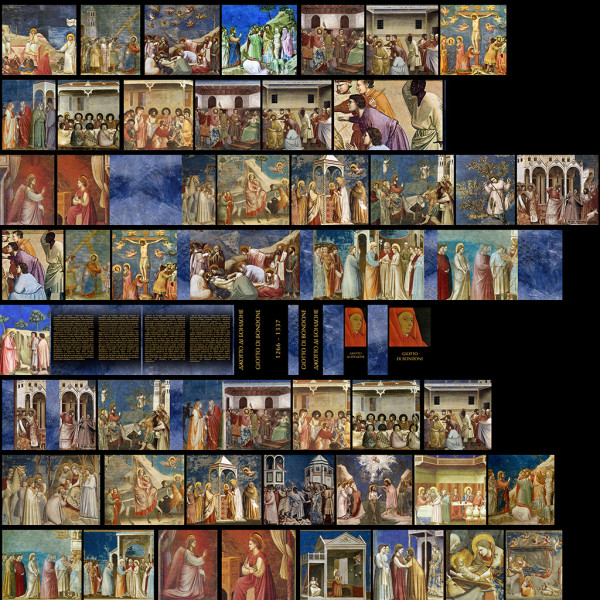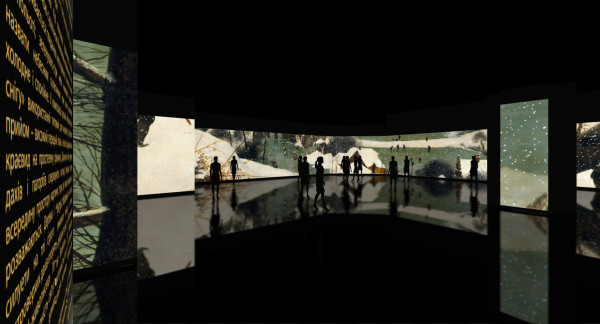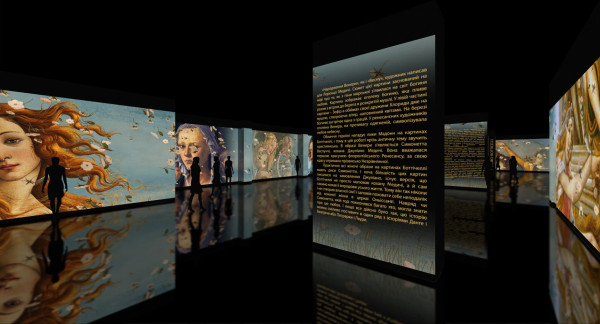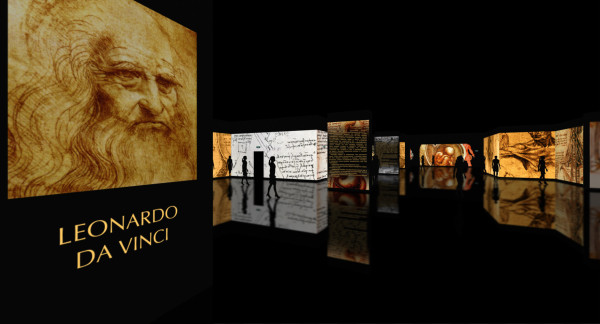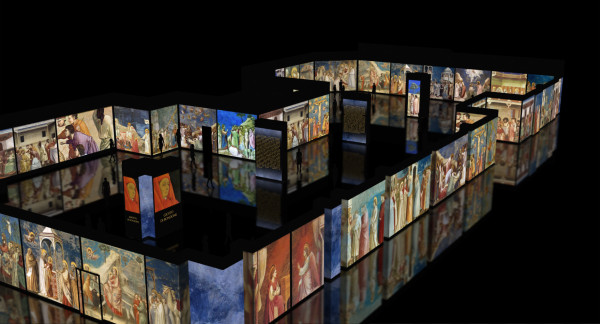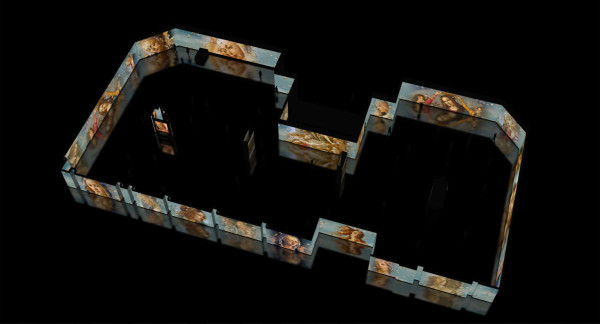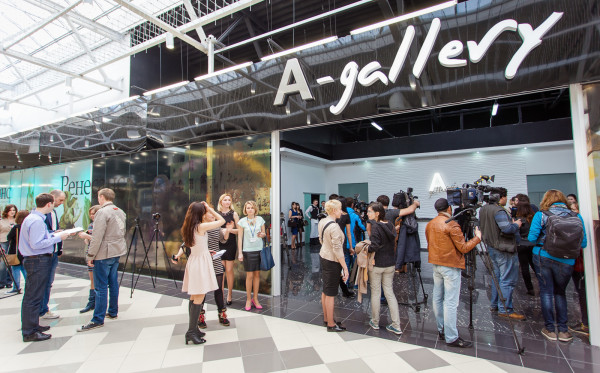When the opening of the new Art Mall shopping center was planned in Kiev, Front Pictures (FP) was invited to participate as a studio of innovative technologies. The concept of the mall iwenvolves an art installation as the central content for the shopping space.
The Concept
FP developed a couple of interactive installations, but there still was a desire to create something really outstanding and large-scale. FP offereded to transform a 1400 m2 gallery in a shopping center into a multimedia art space. They illuminated one wall of the gallery with 8 projectors to prove the concept, producing a small demo.
Engineering & optimization
The idea was gladly accepted, aiming to map the walls and columns of the gallery with the maximum resolution and brightness possible, keeping cost-effectiveness in mind. Even with previous experiences of creating large-scale multi-projector multimedia installations before, this particular project raised the bar. The projection was supposed to cover an area of 200 m in width and 3.4 m in height, resulting in an extreme resolution of 47,344 x 800 px, with a 60:1 video aspect ratio. In addition, the pixel density had to be much higher than in outdoor mappings.
Preliminary calculations showed that 50-55 projectors were needed. Normally, so many projectors required the use of at least 5 powerful media servers. However, prior to this project, FP already had the experience of connecting up to 32 projectors to a single media server. They used their proprietary Screenberry technology to create an immersive visual experiences for events and shows (e.g., the innovative Fulldome.pro projects are powered by Screenberry technology).
FP engineers started looking for a way to connect all of the projectors to a single computer. In the beginning they designed a server architecture, which would support up to 64 projectors. They assembled a powerful server with a 6-core Intel processor, 32 GB RAM, SSD RAID array (3GB per second, yes 3 gigabytes) and 2 latest NVIDIA Quadro GPUs (K6000) based on the Kepler technology.
GPUs were synchronized with the help of the NVIDIA Quadro Sync, using 14 Datapath display wall controllers to distribute the video signal from 2 powerful graphics cards (with 8 outputs) to all 52 projectors.
Project setup in TouchDesigner
The next challenge was to make TouchDesigner play back files with such an extreme resolution. Just imagine, the video needed to play at a 6,848 x 6,848 px (46.9 MP) resolution, and the output image would be 15,360 x 4,800 px (73.7 MP). TouchDesigner, although a versatile piece of software, might not be able to handle it. They installed the latest version, which supports 64-bit systems, and started experimenting with it. The support team was prompt and effecient in helping them with issues that arose in the process.
The next step was to configure GPUs. To achieve maximum performance and smooth video playback, FP had to go through numerous combinations of settings and parameters. The output module in TouchDesigner was also reworked several times to achieve target performance. They heavily used Python, which was added in the latest version of TouchDesigner, to program the logic of the playback and calibration modules.
To achieve perfect projector alignment, the output pipeline included not only video playback, but also geometric distortion, blend effects and color correction, which were applied to the video stream in real time. After 2 months of fine-tuning and a number of experiments, they achieved a fully synchronized and smooth playback.
Using the TouchOSC app on the iPad, FP designed an intuitive UI to control calibration and playback.
Hardware Setup
Ultra-short throw projectors with a 0.49 ratio were used so that visitors would not cast shadows on the walls. However, the specifics of wide-angle lenses is that they have no zoom or lens shift. So each projector had to be mounted with centimeter-level precision. Exact technical drawings allowed them to hang the truss and mount the projectors correctly.
Content Creation
Another step was to create a template for the video designers.Based on the projection layout tech drawing, they created a UV map where the exact position of each pixel on the map corresponded to the projected pixel on the wall.The UV map (or frame) had an extreme resolution of 6,848 x 6,848 px, or 46.9 MP for each frame. Furthermore, the total length of the video was 43 minutes or 64,500 frames, and thus had to upgrade the file server, adding another 20TB of disk space and 10Gbit cards to the server and workstations to ensure an effective workflow.
In Front Pictures, they call this process “spatial video design”. Unlike 3D mapping, they project the content onto a complex surface, which consists of a variety of planes with different angles. Not all of the surfaces are visible from all positions, adding another level of complexity to the process of content creation.
In addition to playback, they used TouchDesigner to create a virtual 3D stage where designers could preview their work in real time. They could move a virtual camera inside the set to observe the content the way visitors would see it from different angles and positions, while walking around. The team and the client could experience The Renaissance even before the real gallery was actually built.
Virtual 3D stage (real-time preview):
Exhibition was opened on 29th March at Art Mall’s “A-gallery” and become a great attraction for the whole city. The Renaissance: the Age of Genius has received a great deal of positive feedback from visitors. Next up — the Alice in Wonderland exhibition. Their tests have shown that they can successfully connect up to 64 projectors to a single media server, which will allow them to make the next exhibition even more spectacular!
Credits
Front Pictures
Front Pictures Blog

